
How To Use Present Simple For Future? Top English Grammar
Present tenses used for the future: We use the present simple when we talk about timetables and programmes.: The train leaves at 12.00. What time does the film begin?: We use the present continuous when we talk about things we have already arranged to do.: I'm going to the cinema this evening. I'm not working tomorrow.

Simple Future Tense Definition and Useful Examples in English ESL Grammar
Present Simple vs. Future Simple Tense. The present simple tense is used when: The action or state of being is happening right now. The action or state of being happens regularly. The statement expresses a general truth. We form it by adding -s or -es to the root verb when the subject is singular and in the third person. Otherwise, we keep.
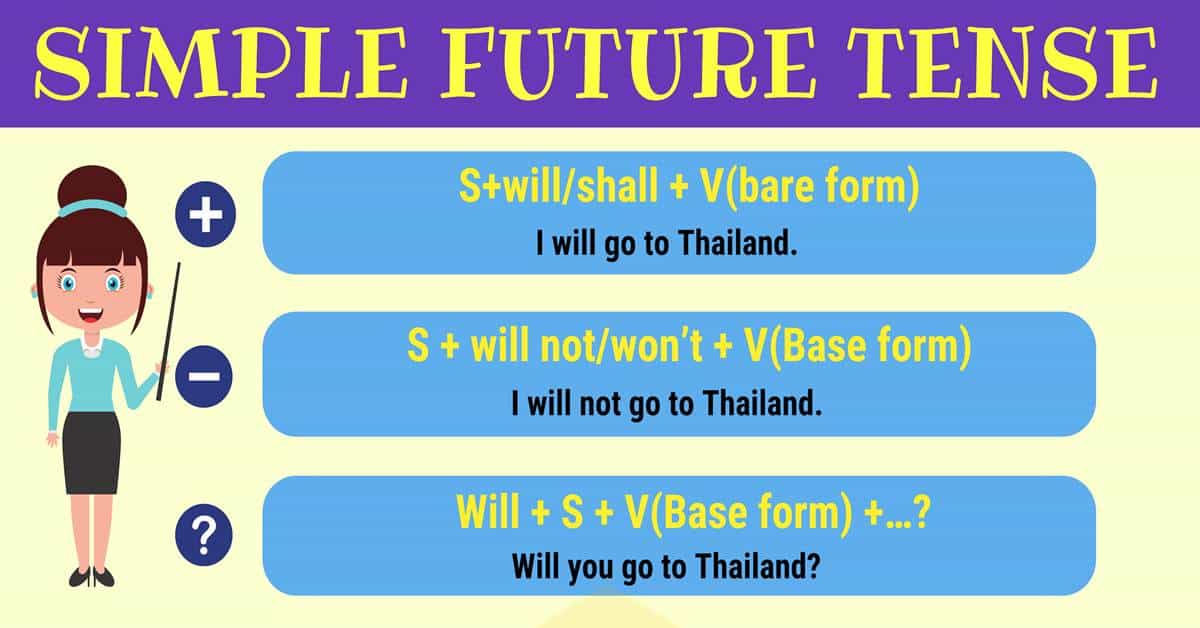
Simple Future Tense Rules and Examples English Grammar
As you can see, we use the present simple after the conjunctions. Adverbial clauses with time conjunctions. In a similar way to the conditional clauses, we use the present simple as a future tense after time conjunctions like when, until, before in adverbial clauses. Take a look at these sentences: Please remain seated until the doctor calls you.

Simple present for future events English4Today
1. Future events in a timetable or schedule use the present simple. The train leaves at 5 pm. The course starts in September. 2. Future arrangements or plans can use present simple or present continuous (be + verb+ 'ing) I go to the office next Monday; I'm leaving France tomorrow afternoon; 3. Official reports on TV, radio and in newspapers

In English, the simple future tense is used when you want to make decisions to do something in
Level: intermediate. When we know about the future, we normally use the present tense.. 1. We use the present simple for something scheduled:. We have a lesson next Monday. The train arrives at 6.30 in the morning. The holidays start next week. It's my birthday tomorrow.. 2. We can use the present continuous for plans or arrangements:. I'm playing football tomorrow..
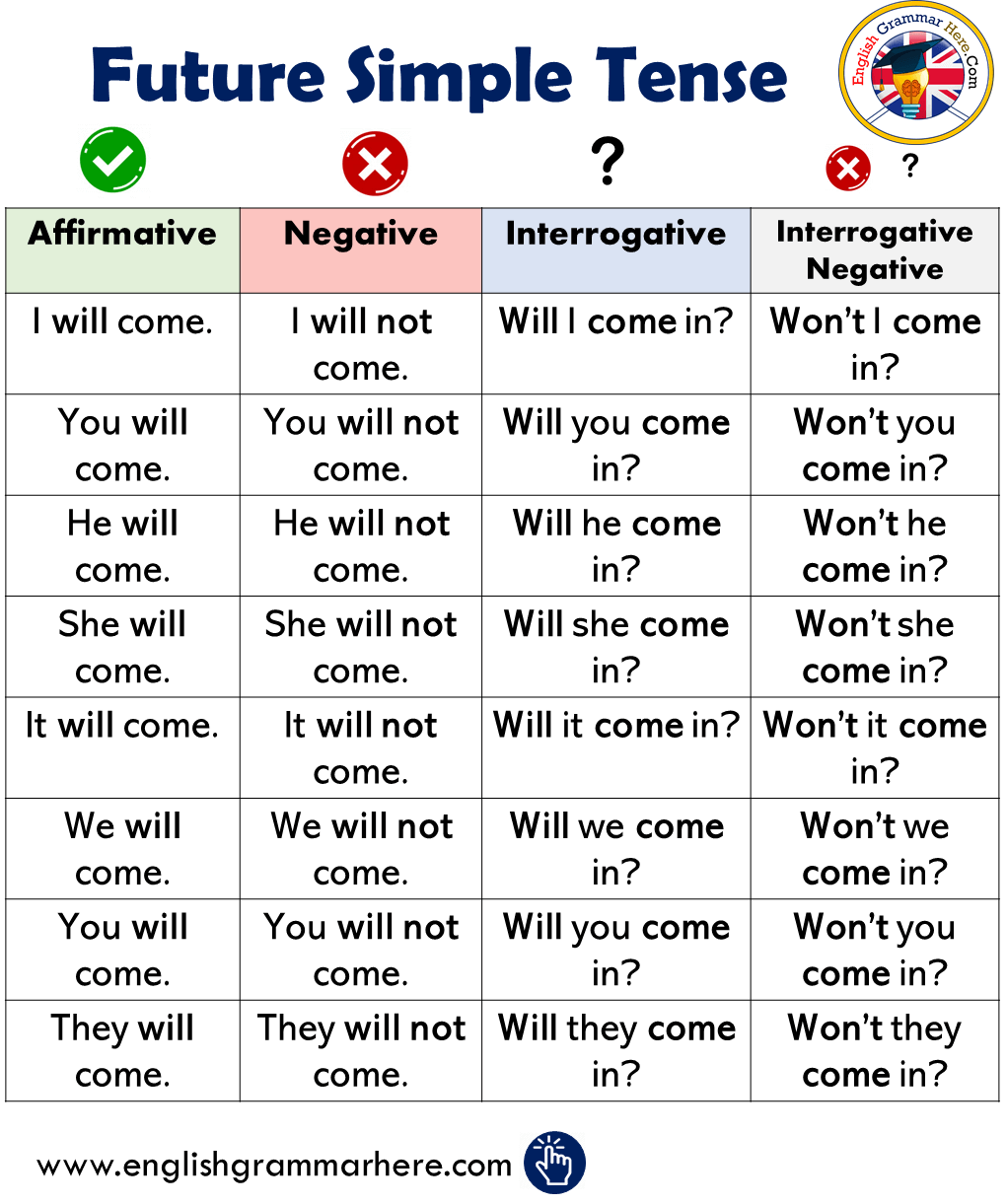
Future Simple Tense in English English Grammar Here
Simple Present for Future Events: Function. The simple present is used to make statements about events at a time later than now, when the statements are based on present facts, and when these facts are something fixed like a time-table, schedule, calendar.

Simple Future Tense Rules and Examples 7 E S L
How to form sentences in Present Simple for Future. When we use the Present Simple to talk about the future, we form affirmative (positive), interrogative (question), and negative sentences according to all the rules of the Present Simple. Affirmative (Positive) Sentences. We use the common order of words in our affirmative (positive) sentences.
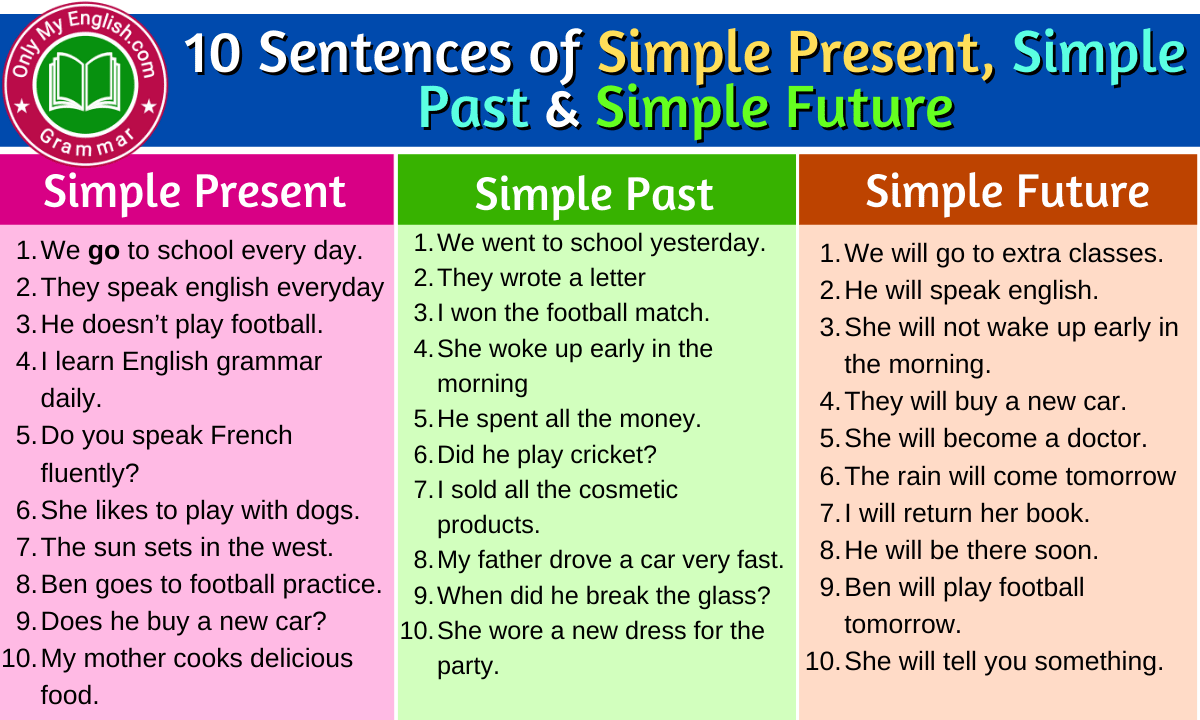
10 Sentences of Simple Present, Simple Past & Simple Future
Free Shipping Available On Many Items. Buy On eBay. Money Back Guarantee. But Did You Check eBay? Check Out The Present Future On eBay.
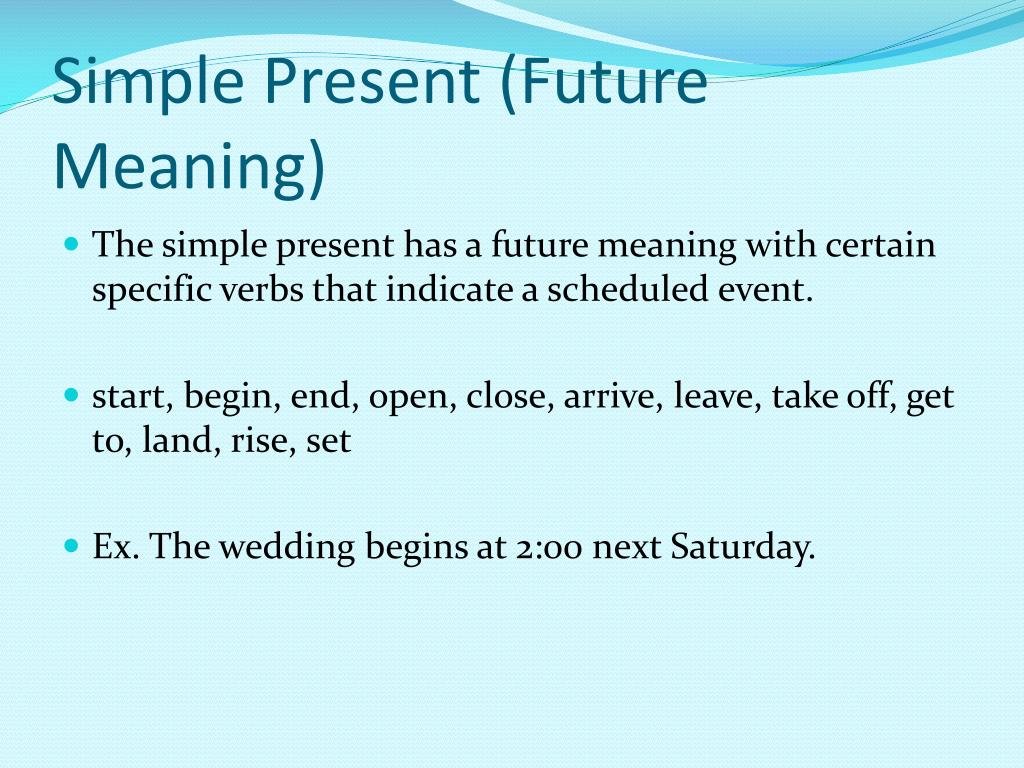
PPT Simple Future Tense PowerPoint Presentation, free download ID554523
As you watch the video, look at the examples of future forms.. That's present simple, isn't it? Yes. You can use present simple for timetabled events. My plane leaves at 4pm tomorrow. The match starts at 8pm. Phew! So sometimes you can use going to or the present continuous and sometimes you can use will or going to. And you can also use.
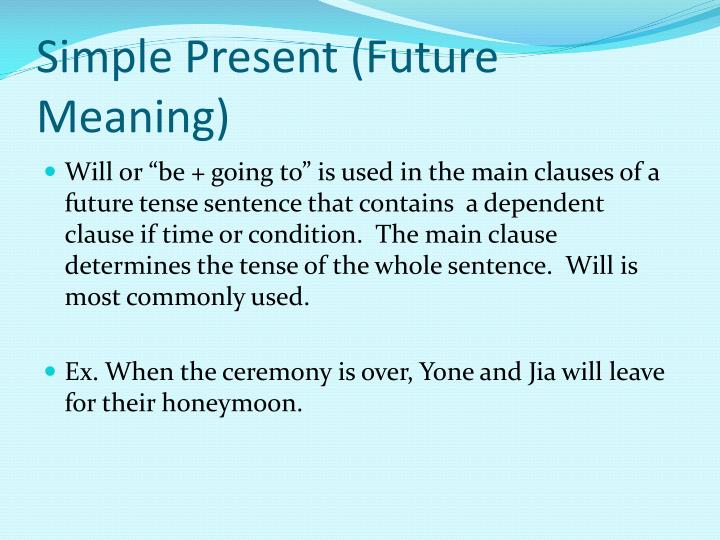
PPT Simple Future Tense PowerPoint Presentation ID554523
Future: present simple to talk about the future ( I work tomorrow ) - English Grammar Today - a reference to written and spoken English grammar and usage - Cambridge Dictionary

Present Simple For Future Scheduled Events Exercises Exercise Poster
The general structure is exactly the same as the Present Simple, but we add a future adverb of time on the end: SUBJECT + INFINITIVE VERB + OBJECT + FUTURE ADVERB OF TIME. The verb "to be" is conjugated as usual. Third person: We add S to the end of the verb, unless it ends with a Z, S, CH, SH or DGE sound, in which case we add ES and it is pronounced with an extra syllable.

The English Teacher VERB TENSES 5 FUTURE FORMS PRESENT CONTINUOUS AND SIMPLE AND REVIEW OF
Simple present is one of the ways to refer to the future in English. When future events happen according to a public timetable (like trains, flights, cinema, opening hours of an organization, calendar, classes etc.), we use the present simple to talk about the future. It is not our personal schedule, but it is the same for everyone who uses it.

How to Use the Present Simple for Timetable Future YouTube
https://www.tofluency.com/tools - In this English lesson, you will learn how to use the present simple to talk about future events. I also introduce an idiom.
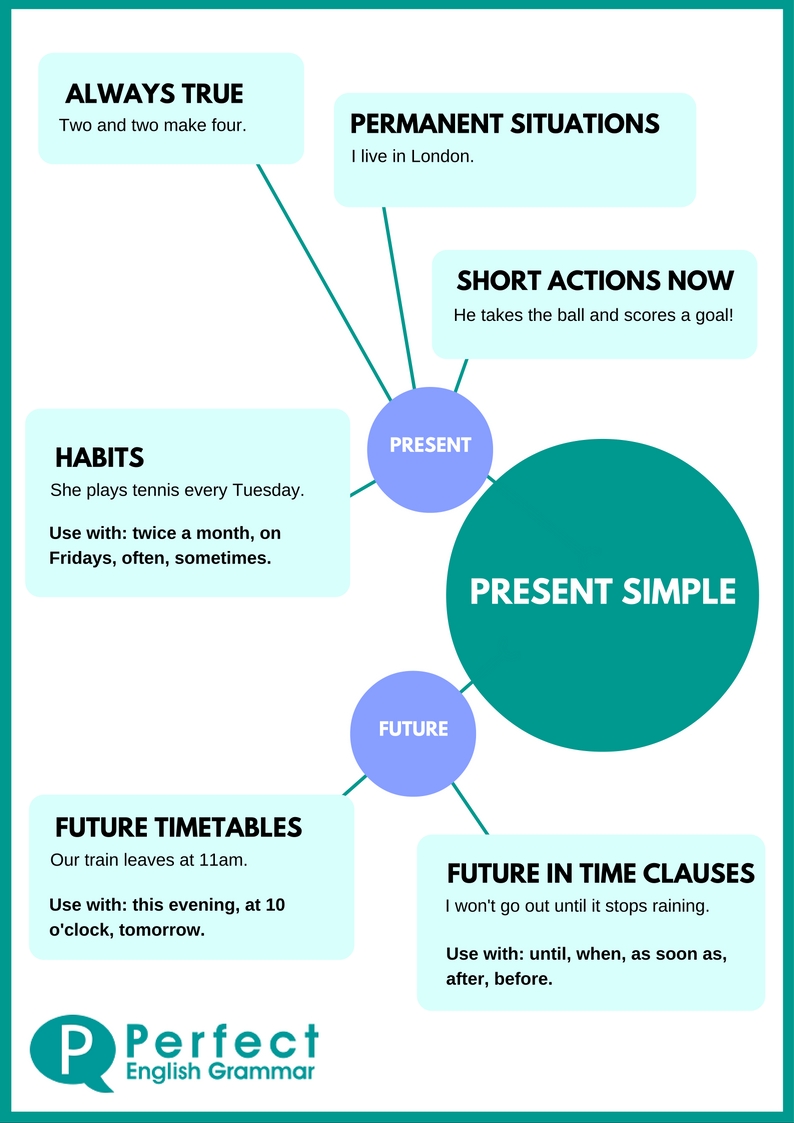
Present Simple With Future Meaning Exercises Pdf Exercise Poster
Transform Your Marks Into Grade-A Achievements With Osmosis's Unique Study Tools. Osmosis helps train your brain with resources designed to lock in key info for good.

Simple present, past, and future tenses
The simple present is used to make statements about events at a time later than now, when the statements are based on present facts, and when these facts are something fixed like a time-table, schedule, calendar.
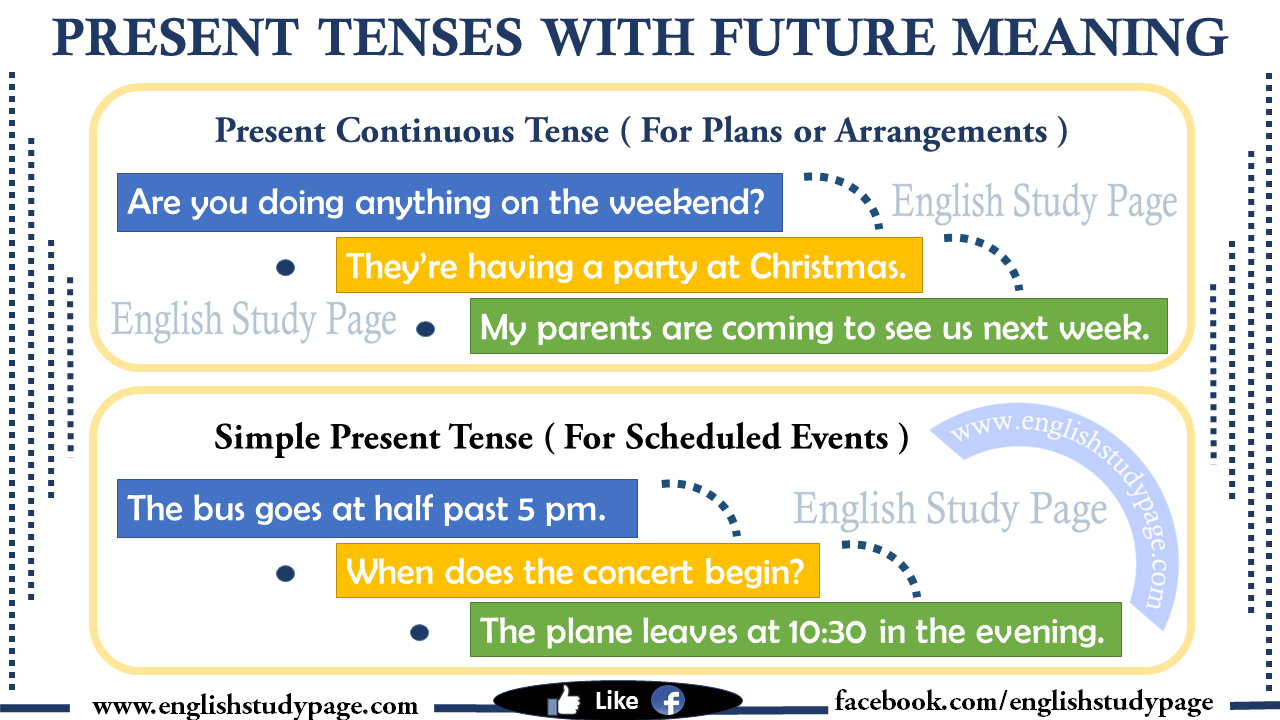
Present Tenses With Future Meaning English Study Page
When talking about schedules, timetables and itineraries, the present simple tense is used to refer to a future event that is planned and is not likely to change: I have a meeting on the 15 th, but I'm free on the following day. What time is your flight? The last train to Rome leaves at 22.30. On day 6, we visit the pyramids. His father retires.